The Huawei Mate 8 Review
by Andrei Frumusanu on January 5, 2016 1:00 PM EST- Posted in
- Mobile
- Smartphones
- Huawei
- Cortex A72
- Kirin 950
- Mate 8
- CES 2016
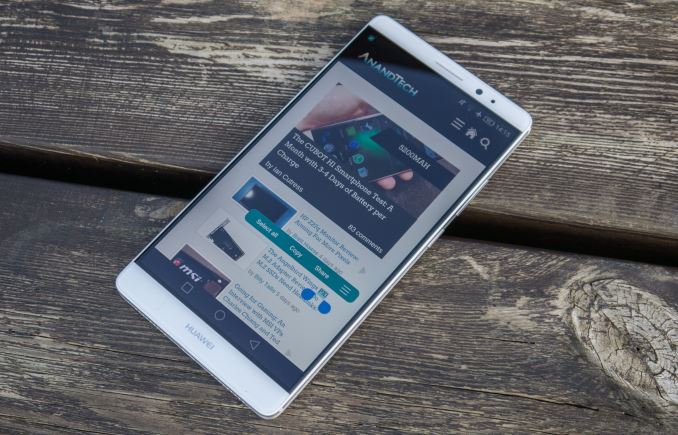
It’s been over a year since we reviewed the Huawei Ascend Mate 7 and Ascend Mate 2. For many people and including ourselves at AnandTech these were among one of the first experiences with Huawei as a smartphone device manufacturer. Ever since our review of the Honor 6 I kind of fell into the position of being the main editor in charge of Huawei device reviews and thus experienced first-hand the company’s efforts in the high-end as well as their increasingly visible expansion into western markets.
The Mate 8 is the successor to the Ascend Mate 7, and in a similar fashion to the P8 last spring the phone drops the Ascend name in favour of better establishing the Mate brand for Huawei's large premium phablet models. The Mate 8 is in a lot aspects an evolutionary design over the Mate 7, but at same time comes at the moment of a generational shift brought forth by the adoption of the new Kirin 950 SoC. With help of the new chipset and other improvements we’ll see that Mate 8 not only manages to raise the bar for Huawei but also to deal blows to competing devices in several aspects, making the phone a worthy candidate in the upcoming 2016 smartphone generation battle.
Introduction & Design
So let’s dive in for a comprehensive look at what Huawei has managed to bring this year for the Mate series and determine its strengths and possible weaknesses.
| Huawei Mate 8 | ||
| SoC | HiSilicon Kirin 950 4x Cortex A53 @ 1.8GHz 4x Cortex A72 @ 2.3GHz Mali-T880MP4 @ 900MHz |
|
| RAM | 3-4GB LPDDR4 @ 1333MHz | |
| NAND (NXT-AL10) |
32GB / 64GB / 128GB NAND + microSD |
|
| Display | 6” 1080p JDI IPS-Neo LCD | |
| Modem | 2G/3G/4G LTE Cat 6 (Integrated HiSilicon Balong Modem) |
|
| Networks (NXT-AL10) (NXT-L29) (NXT-L09) |
TDD LTE | B38 / B39 / B40 / B41 |
| FDD LTE | B1 / B2 / B3 / B4 / B5 / B6-B6 / B7 / B8 / B12 / B17 / B18 / B19 / B20 / B26 / B28 | |
| UMTS | 850 / 900 / AWS / 1900 / 2100 ( B19 / B8 / B6 / B5 / B4 / B2 / B1) |
|
| GSM | 850 / 900 / 1800 / 1900 | |
| Dimensions | 157.1 (h) x 80.6 (w) x 7.9 (d) mm 185g weight |
|
| Camera | Rear Camera w/ OIS 16MP ( 4608 × 3456 ) Sony IMX298 1/2.8" w/ 1.12µm pixels F/2.0 aperture, 27mm eq. |
|
| Front Facing Camera 8MP ( 3264 × 2448 ) Sony IMX179 1/3.2" w/ 1.4µm pixels F/2.4 aperture, 26mm eq. |
||
| Battery | 4000mAh (15.2 Whr) | |
| OS | Android 6.0 with EmotionUI 4.0 |
|
| Connectivity | 802.11a/b/g/n/ac dual-band 2.4 & 5GHz BT 4.2, microUSB2.0, GPS/GNSS, DLNA, NFC |
|
| SIM Size | NanoSIM + NanoSIM (w/o microSD) (NXT-L09 is single-SIM) |
|
| MSRP | 3GB + 32GB | China: ¥2999-3199 (USD~479, ~449€) - Europe: 599€ |
| 4GB + 64GB | China: ¥3699 (USD~591, ~554€) - Europe: 699€ | |
| 4GB + 128GB | China: ¥4399 (USD~703, ~659€) - Europe: N/A | |
At the heart of the Mate 8 we find HiSilicon’s new Kirin 950 SoC. We were lucky enough to be one of the few western media outlets able to attend the SoC’s launch event in Beijing earlier in November and deliver an in-depth look at what the new chipset promises in terms of improvements over past Kirin generations. As a short overview, the Kirin 950 is a big.LITTLE SoC with the first mobile implementation of ARM’s Cortex A72 cores in a quad-core configuration clocked in at 2.3GHz, accompanied by a quad-core Cortex A53 at 1.8GHz acting as the little cluster. Graphics is powered by a Mali T880MP4 GPU with a frequency of 900MHz. Past Huawei devices’ major weak-points were related to the choice of SoC and as we’ll see shortly in the dedicated SoC section we’ll see that HiSilicon was able to fulfil and even exceed some of our expectations of both ARM’s new Cortex A72 as well as the Kirin chipset as a whole.
In terms of memory the Mate 8 comes in either 3 or 4GB RAM variants, depending on whether one chooses the 32 or the larger 64GB and 128GB NAND storage models. Expandable storage is par for the course as we have a combo-dual SIM slot with the choice of either employing a second (2G only) nanoSIM or to use the slot as a microSD card expansion.
Going over the design we see a front exterior that doesn’t change all that much when compared to the Mate 7, with only subtle details being able to give hints that this is a new model. Keeping the same form-factor, the Mate 8 maintains a fairly large size coming in at 157.1 x 80.6 x 7.9mm. Even though the device is large, it’s able to sport a very good screen-to-body ratio for the large 6” 1080p JDI Neo-IPS screen. The top and bottom bezels particularly make the Mate 8 quite short compared to other devices of similar screen size.
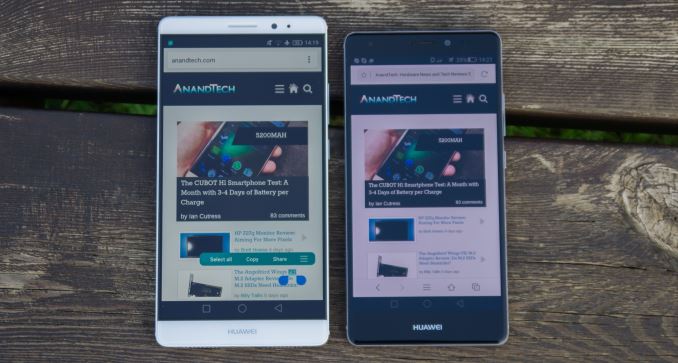
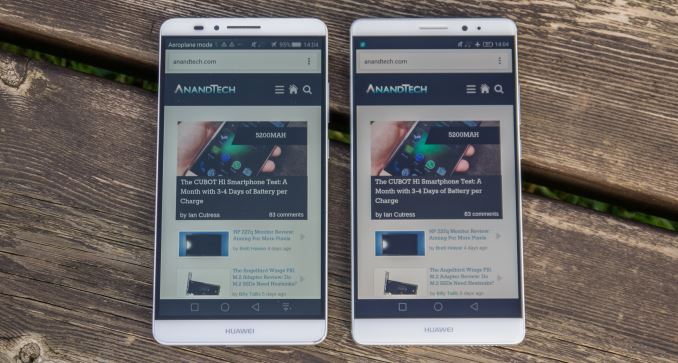
Mate 8 vs Mate S - Mate 7 vs Mate 8
A rather disappointing continuation of the Mate 7 design is the reintroduction of a ~2.5mm thick inactive black border around the screen that is found on all colour-variants of the phone. This creates a quite distracting window-frame effect on the lighter coloured models. I wish Huawei had been able to get rid of the distracting feature or at least chosen to keep the front all black for all colour models.
It’s on the back and sides where we see the Mate 8 diverge from the Mate 7’s features as there are several design language changes for the various components. First of all the square trio of camera lens, LED flash as well as fingerprint sensor have now become circular. The finger-print sensor saw the biggest design change as the is no longer a visible metal rim around it and is now similar to the one found on the Mate S and Nexus 6P. Previously the feature on the Mate 7 was described as being used to detect one’s finger while the device and fingerprint sensor were asleep, something the new models either are able to camouflage away or outright no longer require. The Mate 8 also was able to dispose of the small gap above the camera which served as an antenna line for the NFC coil, all while still keeping NFC funtionality.
The main camera is now powered by a Sony IMX298 16MP sensor module with OIS and an F/2.0 aperture optical lens system. This is a normal Bayer RGB sensor as opposed to last year’s main usage of the RGBW IMX278. Huawei also drops the usage of an external Altek ISP and instead relies on the Kirin 950’s new ISP capabilities. The front camera remains the same IMX179 F/2.4 8MP module as found on the P8, Mate S and Nexus 6P which I found to take excellent front-facing shots.
The top and bottom of the phone is no longer wholly composed of plastic covers that go over the sides of the device, but is now composed of aluminium separated by antenna lines on the sides and with a plastic lid on the back side. In a sense this design stands out less than the antenna lines on the Mate S and may be the rationale behind the choice. On all sides we find a coarse brushed metal finish (actual brushed metal) that gives the device much firmer grip than other devices but is also harder to clean if dirtied by fine elements.
The speaker is moved from the back of the phone onto the bottom, much in the same layout as found on the P8 and Mate S. Also the same as the previous designs who introduced this new layout, there’s only one speaker to be found as the other grill only serves for aesthetical symmetry and the main microphone.
A large ergonomic improvement is found on the sides of the device as the new 2.5D glass screen is no longer surrounded by a raised plastic edge but instead uses the same hard compound filling between the glass and metal body. The back also has a curvature of a larger radius, which together with the 2.5D glass gives the impression of a thinner device although the Mate 8 isn't any thinner than the Mate 7 at its maximum thickness.
My sample was a 32GB silver variant, so I can only comment on the finish of this model; I found that the new anodized aluminium finish to be quite hard to clean as dirt was very easy to stick to the grain of the metal. The positive side of this characteristic was that the device was much better to grip than the comparatively smoother finish of the silver Mate 7, with the gunmetal grey of the Mate S representing a happy medium between both designs.


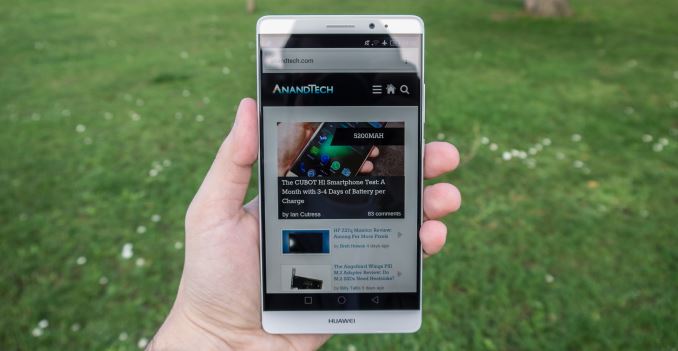

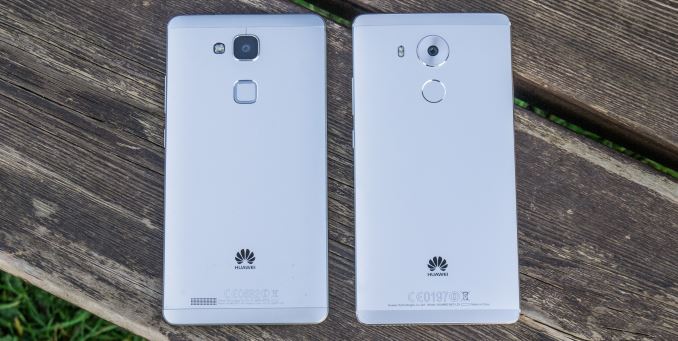
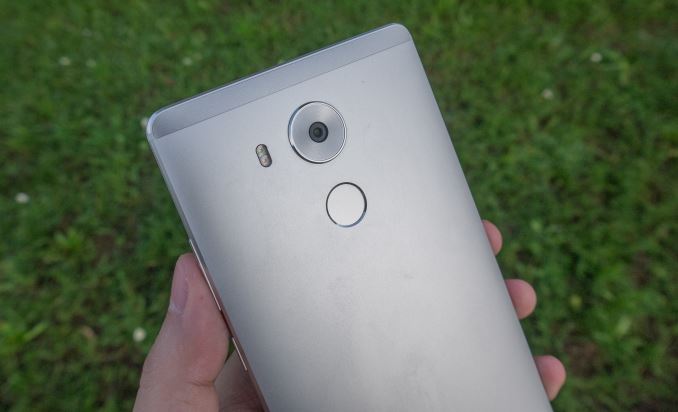
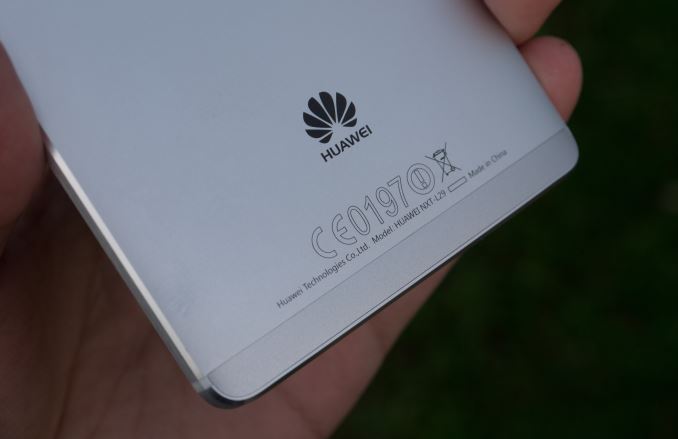



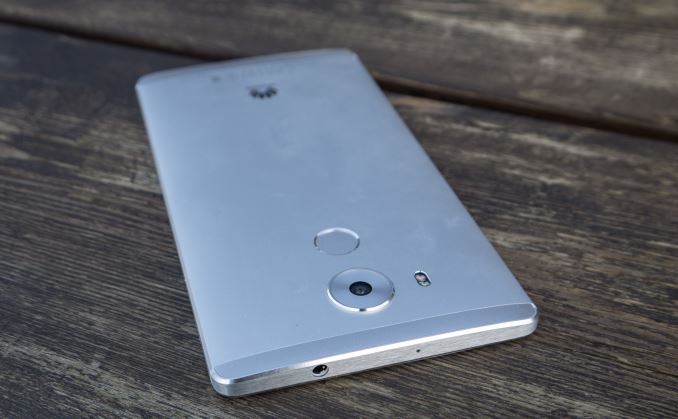
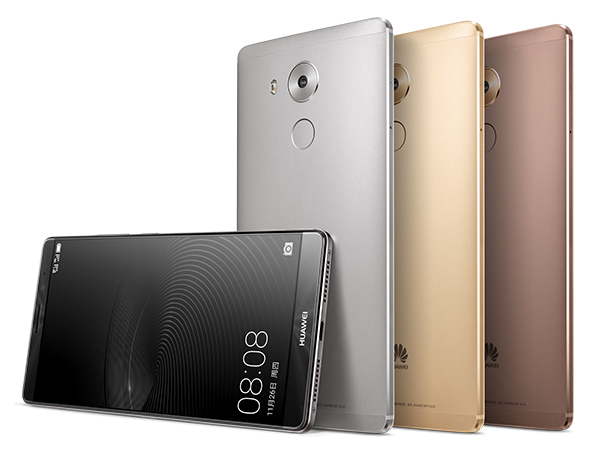
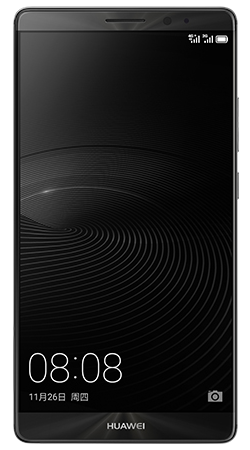








116 Comments
View All Comments
jay401 - Monday, January 11, 2016 - link
Mate 8? Why not just name it the "M8".huberddp - Monday, January 18, 2016 - link
I have a Nexus 6P and it never gets hot. Only the battery when charging.fanofanand - Tuesday, January 5, 2016 - link
$700+ for a Chinese device, yeah good luck with that. They really think people are going to choose this over a shiny new iPhone? They need to approach Western markets the way Hyundai and Toyota/Lexus did. Very few people will risk that kind of coin when there are proven alternatives available at the same price. That's why Lexus and Hyundai went with the "Everything the other guy has but 10% cheaper" kind of thing. If they were selling this phone for $450 people would take the risk, but I can't imagine this will be a smashing success in the West.beggerking@yahoo.com - Tuesday, January 5, 2016 - link
i take my $100 Blu phone over any icrap any day.niva - Tuesday, January 5, 2016 - link
I'm more concerned about the software on these phones than anything else. The reason why the Nexus 6P is doing so well is because Google manages their software and people are inclined to trust that process. Any other phones by Huawei will not sell well here, especially at those high prices.johnny_boy - Tuesday, January 5, 2016 - link
Huawei is pretty good from my experience. I own a Honor 6 and it got a relatively timely update to lollipop last year (though you need to download it from the Indian support site). There is reportedly Marshmallow update plans scheduled for this year, too. If this device gets Marshmallow, that will be quite impressive.Ethos Evoss - Wednesday, January 6, 2016 - link
Yes I just purchased Honor 6 Plus just for £120 and it is very good phone..Marshmallow is coming on both honor 6 and plus so that is awesome ! http://forum.xda-developers.com/honor-6/general/hu...
The sound is NOT good as on Vivo X5Pro but that IPS screen .aah whites are much much better still than ON AMOLED.. I really can't wait to receive S6 edge to compare the whites and the brightness
s.yu - Saturday, January 16, 2016 - link
Stupid Huawei fanboy you don't even know how to make a proper comparison. If you need the "blazing" white as some put it, using adaptive mode solves it. If you want an accurate white, there are basic and AMOLED photo modes.Ethos Evoss - Sunday, January 24, 2016 - link
You ashole qhy I would be fanboy?of this phone? When I have iPhone 6,s6 edge ,vivox5pro, P7 ..I just ignore you kiddo ;)
SanX - Thursday, January 7, 2016 - link
Generally agree. I tried Blu 6" 1080p not for $100 but for $200 as a temporal substitute. Aside from speed in games it was OK. Of course Nexus 6 is better but not that much really. And the screen of Blu is way brighter. Every next gen of cheapo phones make all other phones more and more marginally different. Advantages? You do not care to lose or drop them. Companies must think of allowing multiple phones with the same phone # so that we will never search for the misplaced phones LOL